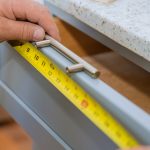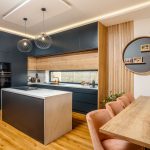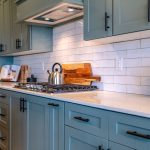Cabinet refacing is an excellent choice for homeowners who wish to revitalize their kitchen without diving deep into their pockets. It’s a trending topic in the world of kitchen remodeling, and for a good reason.
Not only does it provide a fresh and modern look, but it also can be a more economical option than a full replacement. If you’re wondering about kitchen cabinet refacing, its cost, and how to go about it, this blog post will guide you through the process.
What is Cabinet Refacing?
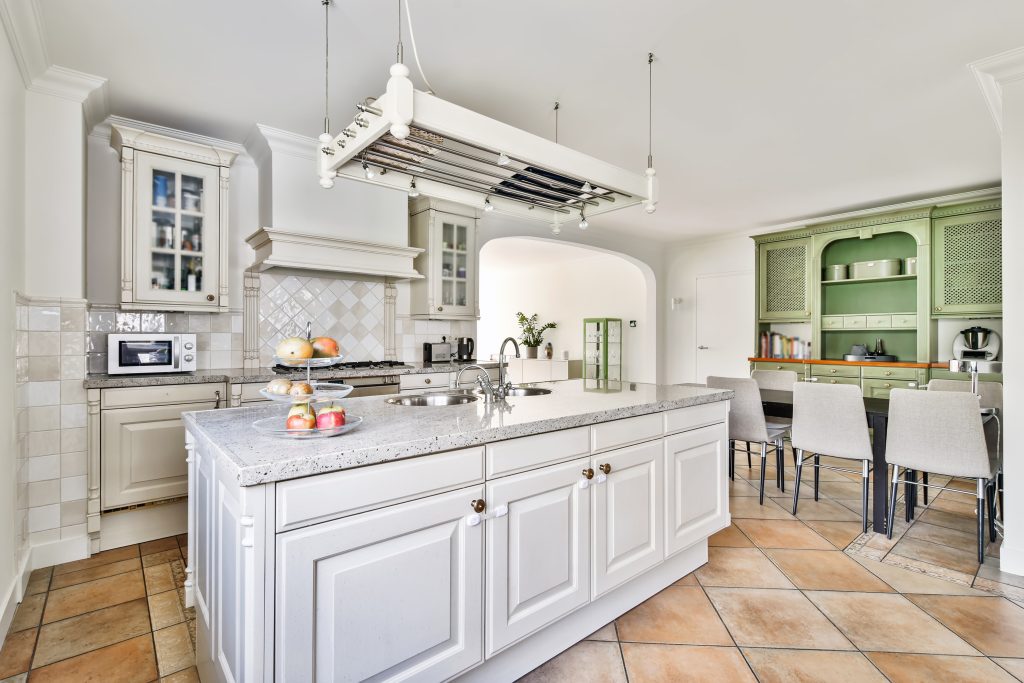
Cabinet refacing, also popularly referred to as cabinet resurfacing, is a transformative process tailored to rejuvenate and enhance the aesthetics of your kitchen without the complexities of a complete overhaul.
At the heart of this method lies the principle of utilizing the existing cabinet boxes while seamlessly updating their exterior appearance. This entails a meticulous procedure where the old cabinet doors and drawer fronts are replaced with new ones, complemented by the application of a carefully chosen veneer to the outer structures of the cabinets.
Not only does this process ensure a more contemporary and polished look, but it also allows homeowners to embody the latest design trends without the need to invest in entirely new cabinetry. By refacing, you’re essentially preserving the structural integrity of your cabinets and simply revamping their surface, much like how a facelift revitalizes one’s appearance.
It’s a sustainable, economical, and efficient approach to kitchen remodeling, aligning both aesthetics and functionality.
Can I Reface My Own Cabinets?
Absolutely! With the right tools, patience, and a bit of guidance, DIY enthusiasts can take on the task of refacing cabinets. Let’s delve into the steps involved:
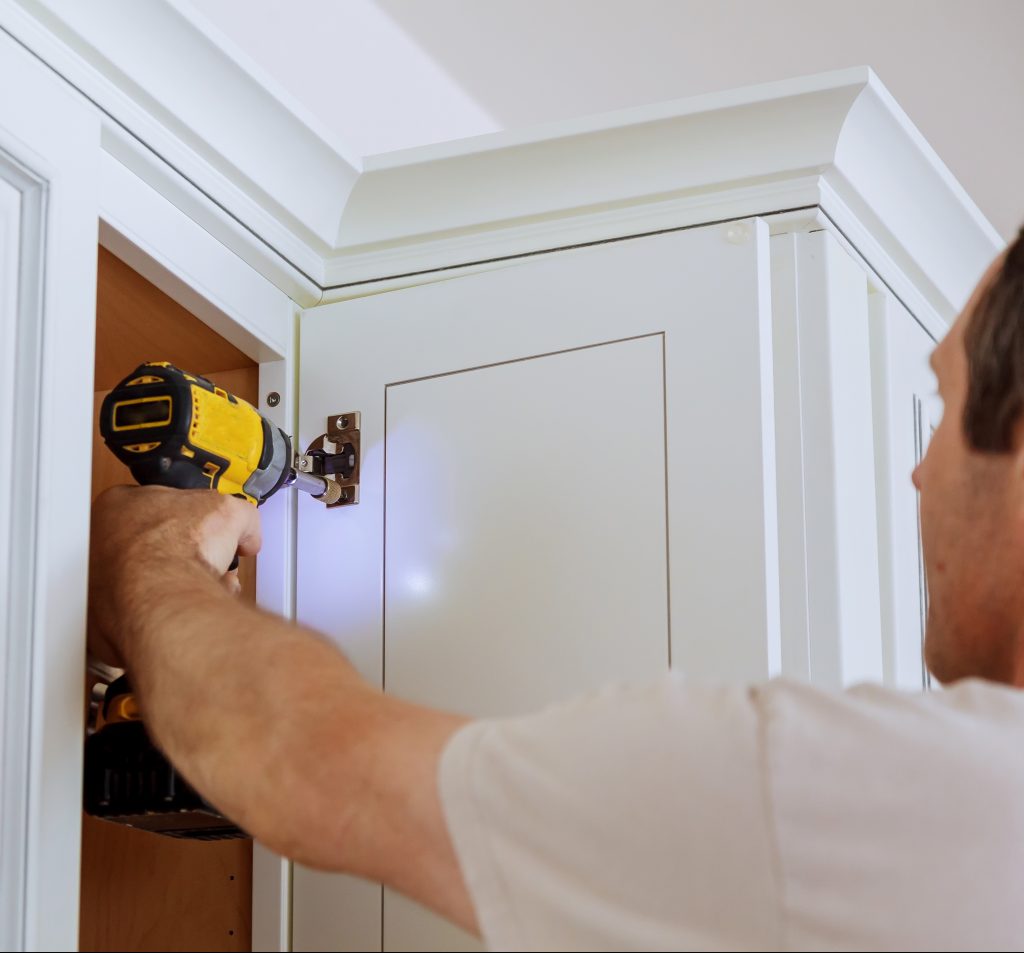
1. Assessment and Preparation: Begin by inspecting the existing cabinet boxes. Ensure they are structurally sound. Clean the surfaces and remove any old paint or varnish.
2. Select Your Materials: This is where product categories like cabinet doors come into play. Decide whether you want custom cabinets or prefabricated ones. Choosing solid wood can lend a timeless appeal and durability.
3. Remove Old Doors and Hardware: Detach the existing doors, hinges, handles, and knobs. Keep the hardware if you plan on reusing them.
4. Apply Veneer: Measure the surface areas of the cabinet boxes and cut veneer sheets accordingly. Adhere using a strong adhesive, ensuring no bubbles or wrinkles appear.
5. Attach New Cabinet Doors: Using your selected cabinet doors, align them perfectly with the cabinet boxes and attach using the hardware.
6. Finishing Touches: Consider painting or staining the newly refaced kitchen cabinets to add an extra layer of protection and elegance.
Is It Cheaper to Reface or Replace Cabinets?
The decision between refacing and replacing kitchen cabinets often boils down to cost considerations. More often than not, refacing kitchen cabinets emerges as the significantly more economical option compared to full-scale replacements. Here’s an in-depth look into the financial breakdown:
Material Costs: Cabinet refacing primarily focuses on the exterior enhancements, meaning you are majorly investing in new doors, drawer fronts, and in many cases, veneer. In contrast, total cabinet replacement means purchasing entire new cabinet structures, inclusive of both the interiors and exteriors, which substantially drives up material expenses.
Labor Costs: Labor plays a pivotal role in the cost equation. If you’re inclined towards a DIY approach, refacing becomes an avenue to realize substantial savings. But even if you’re leaning towards hiring professionals, refacing generally requires fewer man-hours. This is because the process circumvents the time-consuming steps of completely tearing out existing cabinets and installing new ones from scratch, which can often entail addressing unforeseen challenges like plumbing or wiring adjustments.
Minimal Disruptions: Anyone who’s undertaken a home renovation project knows that it’s not just the direct costs that matter; it’s the associated inconveniences too. Kitchen remodeling, in particular, can throw household routines into disarray. With refacing, the kitchen remains largely functional, mitigating the need for alternative cooking or dining arrangements. This streamlined process translates to fewer days of disrupted meals, less takeout, and a reduced need for temporary storage solutions — all of which contribute to indirect savings.
While the allure of brand-new cabinets might be tempting, it’s essential to weigh the tangible and intangible costs. Refacing presents a balanced solution, offering a refreshed aesthetic without the hefty price tag and extended timeline that complete replacements often demand.
Advantages of Cabinet Refacing
Cost-Effective: Cabinet refacing stands out as a budget-conscious choice for homeowners. Not only are the material costs generally lower than a full cabinet replacement, but you also avoid the hidden expenses that come with comprehensive renovations, such as potential plumbing or electrical adjustments. The financial savings are tangible, especially for those looking to enhance their kitchen’s appearance without a hefty price tag.
Eco-Friendly: In our ever-growing environmentally conscious world, cabinet refacing shines as a sustainable option. By opting to reface, you’re essentially reusing the bulk of your existing cabinetry, significantly reducing the waste that might otherwise end up in landfills. It’s a choice that not only benefits your home but also our planet.
Time-Saving: Kitchen renovations can be notorious for their extended timelines, often disrupting daily routines. However, the process of refacing kitchen cabinets is notably swifter. Without the need to dismantle and reinstall complete cabinetry sets, homeowners can anticipate a quicker turnaround, restoring their kitchen’s functionality in a shorter span.
Personalization: Cabinet refacing offers a unique opportunity for homeowners to infuse their personal style into their kitchens. The plethora of design options, from contemporary sleek finishes to rustic wood textures, ensures that each kitchen can be tailored to individual tastes. Plus, with the ability to choose specific materials and colors, the end result is a kitchen that genuinely reflects the homeowner’s vision and aesthetic preferences.
In the realm of kitchen remodeling, cabinet refacing emerges prominently, casting a promising light for homeowners who are on the hunt for a blend of affordability and efficacy in their renovation endeavors. This method not only honors the foundational integrity and structure of your existing cabinetry, but it also paves the way for a dramatic transformation, encapsulating both form and function.
Remember, embarking on a refacing journey, whether as a hands-on DIY enthusiast or by enlisting the expertise of seasoned professionals, demands a conscious selection of materials. The resilience of solid wood doors, the finesse of high-quality veneers, and the craftsmanship behind them play pivotal roles in the end result.
When your kitchen starts beckoning for a rejuvenating touch, don’t immediately leap to exhaustive overhauls. Instead, let cabinet refacing be your first port of call. It harmoniously weaves budget-conscious choices with aesthetic appeal, exuding an undeniable brilliance in the heart of your home. Need some inspiration? Check out our Get Inspired pages!


